Origin and processing of cashmere
The geographical area of Kashmir offered in the past one of the most important and valuable textile raw materials: Cashmere Fiber, which is obtained from cashmere goats. This fiber takes its name from the territory from which it comes that extends north of the Indian subcontinent.
Over the centuries, cashmere goats have spread to other Asian mountainous areas, particularly China and Mongolia.
In the past, Kashmir goats were a very important resource for the ancient shepherd communities of the Kashmir territory.
These animals in fact, thriving in the adverse conditions of this Asian area, develop thick and soft furs, that protect them from the cold, which also protected the ancient communities of shepherds; in fact, temperatures can drop to -40°.
The higher the altitude at which cashmere goats live, the better the quality of their coat.
After winter and spring, the goats lose their hair which was and is still combed to be collected by shepherds, thus obtaining the Cashmere Fiber.
Cashmere fiber has a very long past, so much so that in 1852 the first European cashmere fiber fabric was created. Thanks to the East India Company, in fact, the cashmere fiber "landed" at the court of Queen Victoria of England in the form of precious shawls that took the name of Pashmina, which derives from the Persian word "Pash" which means wool.
The name 'cashmere' was coined later and was used to describe scarves and shawls made by artisans in the Kashmir area.
Most of today's cashmere comes from outside the area of origin, such asIran,Afghanistan and New Zealand, but the name has remained the same.
Going back to more recent times, in the eighteenth century, countries such as China and India slowly began to develop and expand the cashmere trade until the 80s. The pace was surprising: in 1949 there were about 2.4 million goats in Mongolia, and their number rose to 25.8 million in 2004!
Since the advent of knitwear as a fashion item in the early twentieth century, cashmere has grown considerably in popularity for a variety of uses, from knitwear to accessories, symbolising luxury, elegance and quality.
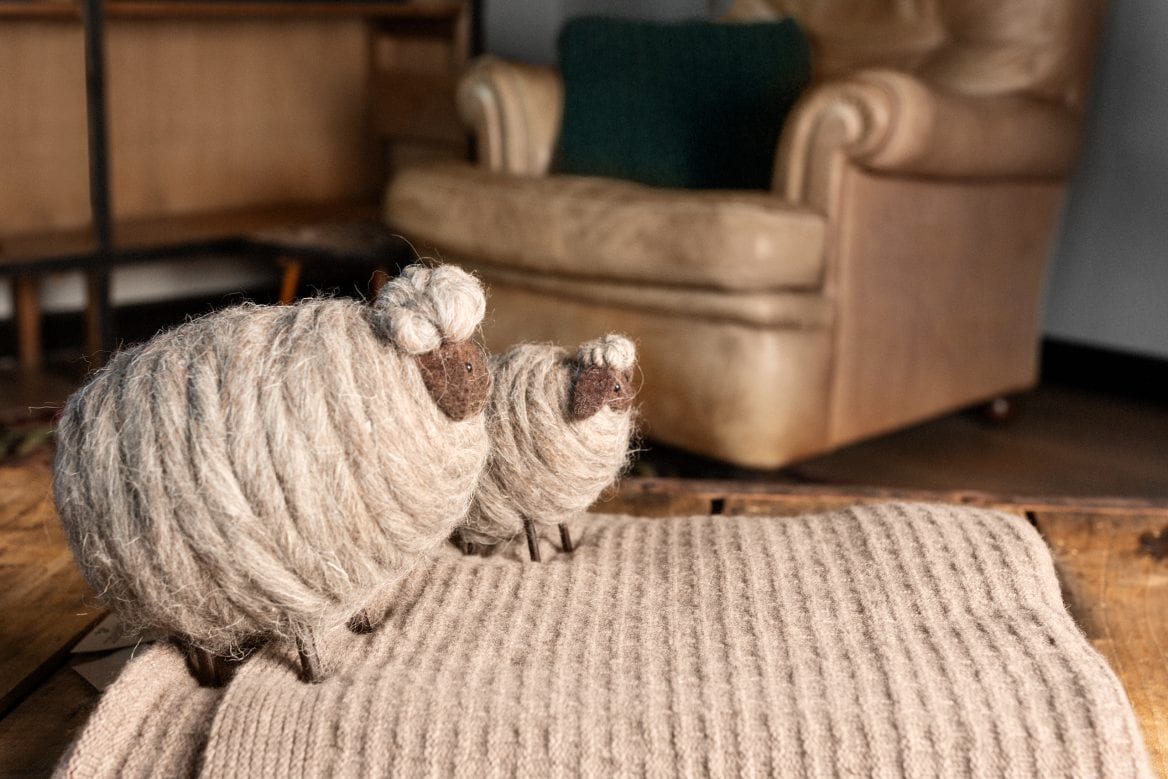
How cashmere is produced and obtained
Differently from wools of sheep origin, Cashmere Fiber is not obtained by shearing the animal, but is obtained by manually brushing the cashmere goat.
Cashmere goats develop two types of hair, a perennial, stiffer primary hairgiarra) and a thinner hair (duvet/borrathat is born in winter and lost in spring. In fact, it is during the spring that the moulting of the animal happens and therefore the time to harvest this fibre.
Harvesting only produces between i 100 and 200 grams of hair for each adult animal, so 2 to 6 goats are necessary to produce a cashmere jumper and this clearly has an impact on the final price of the finished product. On average, the price of a kilo of cashmere yarn is between 160 and 170 euros, excluding the labour.
To produce enough cashmere for a single jumper, a goat usually needs one year. The long, smooth fibres are combed from under the chin and selected according to quality, after the fibres are cleaned and spun to create a yarn that can be weaved or knitted.
Regenerated cashmere and our mission
“...the harvest only yields between 100 and 200 grams of hair per adult animal...", or "... in 1949 there were about 2.4 million goats in Mongolia, but the number has increased to 25.8 million in 2004!".
Yes, these are our own words and as you can well guess, cashmere is not a very sustainable fibre, in fact it has a strong impact on the environment. That is why the only way we can wear this beautiful fibre and help the environment at the same time is through its recycling.
Every kilogram of virgin wool from the pastures of cashmere goats generates 9 kg of CO₂, while regenerated cashmere only produces 0.5 kg of CO₂. This is a substantial and very important difference for the company and for the environment.
Since 1990 the focus of our company has centred on the regeneration of Cashmere FiberThis process contributes to the preservation of both the fauna and flora environment; it is possible to avoid the intensive exploitation of pastures and many dyeing and cleaning processes that would pollute the natural environment.
The company's production process therefore operates 'backwards', namely, it starts with the purchase of cashmere wool knit bales and, through the use of special non-aggressive cards , the fibre is generated again, ready to be fed into the production process for the second time.
TESMA CASHMERE also has GRS (GLOBAL RECYCLED STANDARD), certification, promoted by Textile Exchange, for its raw materials and yarn.
Textile Exchange recognises the fundamental importance of recycling for the growth of a sustainable production and consumption model, and TESMA CASHMERE is the proof.
Protecting planet earth is our priority and day after day we strive to make this goal a reality.
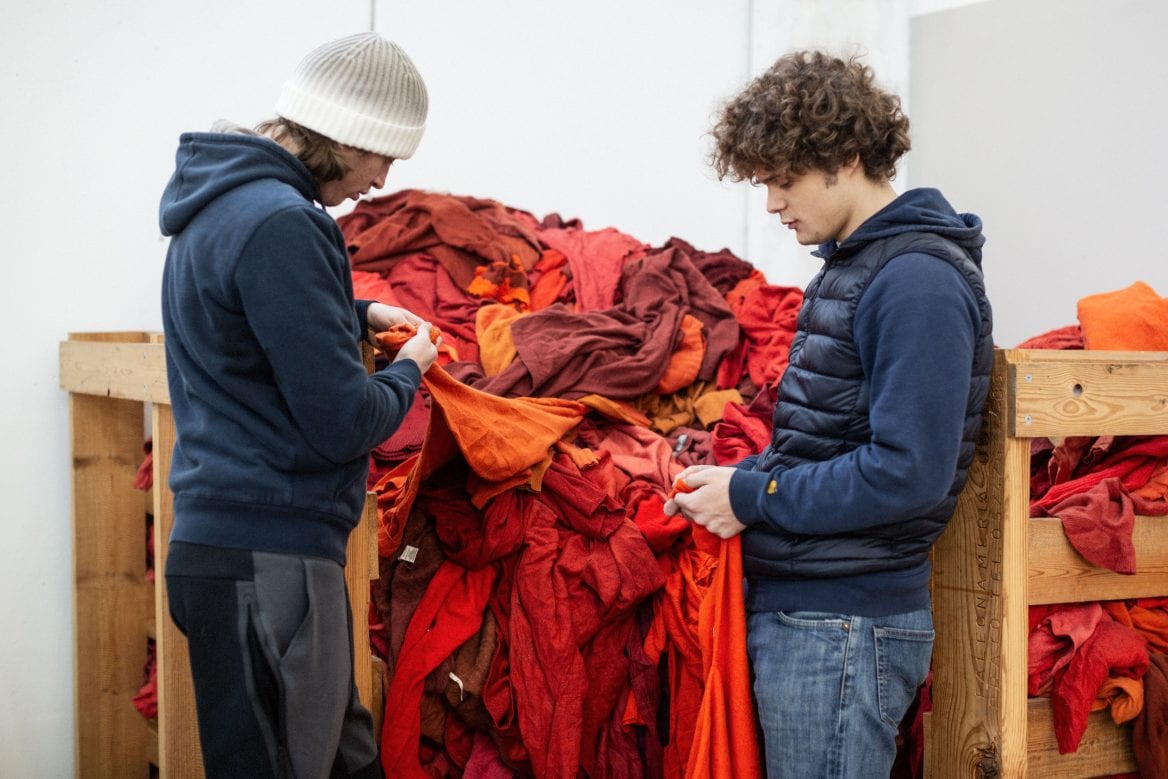
Characteristics of cashmere fabric
The first European cashmere fabric dates back to 1852. In fact, the India Company brought cashmere fibre to the court of Queen Victoria of England in the form of fine shawls that took the name “Pashmina”.
Cashmere garments are recognisable by their unique softness and fluffiness, generating a pleasant sensation in contact with the skin.
Compared to other wools, cashmere is visually much brighter and shinier.
Cashmere garments are also suitable for direct contact with the skin because this fibre is hygroscopic. In fact, it can absorb moisture (thus sweat), up to 33% of its own weight before the feeling of wetness is perceived.
Moreover, cashmere fabrics are suitable for both the summer and winter seasons, because this fibre has thermoregulating properties, meaning it is able to maintain constant body heat and temperature, keeping the air in, thanks to its curled structure, typical of all wools.
Lastly, cashmere fibre is crease-resistant, which means that it does not take creases, so cashmere garments generally do not need to be ironed after washing.
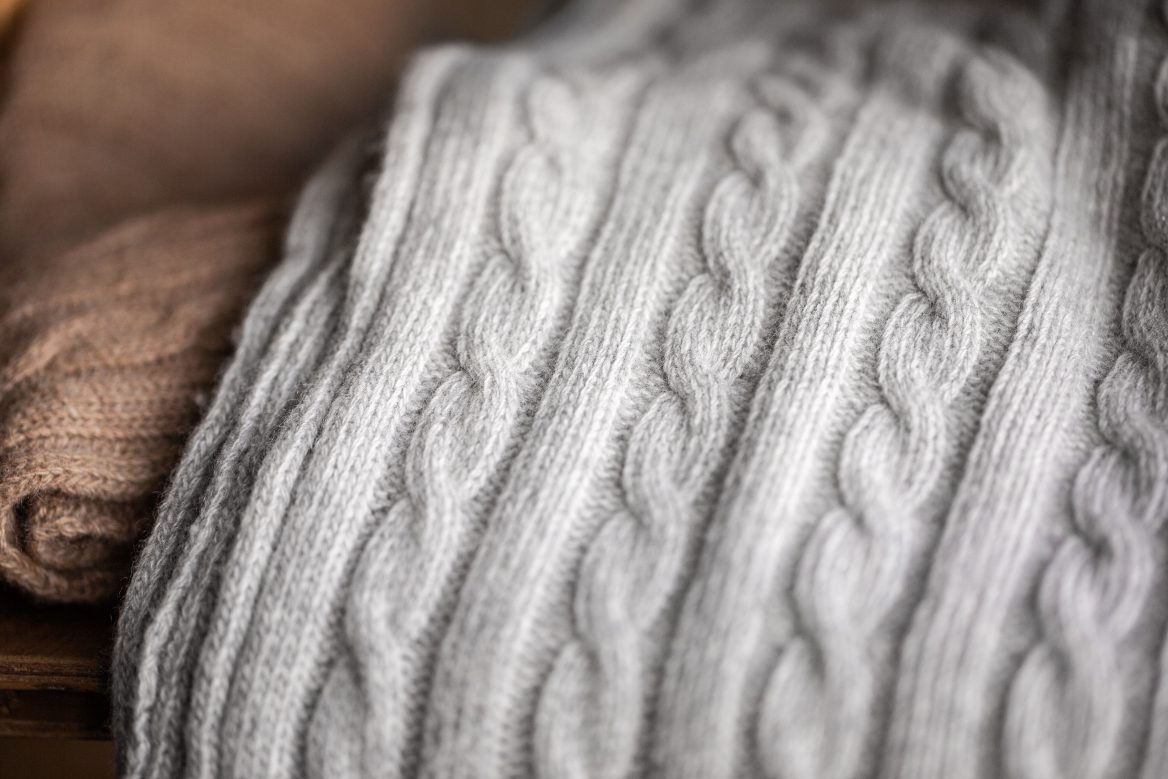
How to recognise cashmere
Since ancient times, cashmere has always been synonymous with luxury and elegance, symbolising belonging to a very high social status.Its fineness and softness is unique among wools, making this fibre a very important and valuable textile raw material.
To recognise if a garment or accessory is made of cashmere, the first thing to do is of course read thelabel sewn on the inside. Sometimes it is possible to find different names for this fibre, such as cashmere, cashmere, kascmir, kashmire, kashmere and others. Nevertheless, all terms indicate the fibre in question.
To understand if it is real cashmere, it is necessary to touch the garment: Cashmere Fiber is recognisable by its unmistakable softness and fluffiness. Visually, however, it appears much shinier and brighter than other wools.
Under the microscope, to realise whether it is real cashmere , it is necessary to observe its structure. The fibre has scales on its surface, scaglie, but unlike other wools, they appear less distinct, which explains its softness. Its fineness is between 18 and 25µ, the typical diameter of very fine wools, and for this reason cashmere has no pith in its structure.
As an unmistakable characteristic of wools is their non-creasing property, another way to tell if it is real cashmere is to squeeze the garment tightly and wait for it to return to its original condition after a few minutes. If this happens then it is real cashmere.
Last, but not least, is the observation of the fibre's behaviour in contact with flame. Try burning a few fibres: if a smell comes out reminding of ''burnt hair'' then it is definitely wool. In fact, wool and hair are both composed of keratin and therefore react in the same way in contact with flame; moreover, there will not be much fume and it will be white in colour; finally, the residue will be palpable coarse ash of a dark grey/black colour..
This is how textile technicians recognise the nature of the fibres.

How to wash cashmere
Washing a pure cashmere garment always generates fear and a lot of questions: will it come back as it was? Will it be ruined? How should I proceed?
In general, because it is a very delicate fibre with little resistance, much care is needed, but don't panic, if you follow all the steps you can be sure that your beloved garment will not be ruined.
Washing by hand
To wash pure cashmere by hand, soak the garment in a basin with lukewarm water and a few drops of a mild wool detergent.
While doing this, massage it gently , avoiding twisting or rubbing.
Finally, make sure that the garment does not soak for more than 5 minutes: it could be ruined and lose colour.
In the washing machine
It might seem impossible, but a pure cashmere garment can also be washed in the washing machine - convenient, isn't it? However, remember to take all the necessary precautions.
It is recommended that the garment be washed inside out, or better still by placing it in a special laundry bag for underwear, in order to preserve it better.
Use a suitable detergent and select a washing programme specifically for wool,otherwise make sure that the temperature never exceeds 30°.
Drying
If the washing was done in the washing machine, spin-drying would certainly speed up the subsequent drying process, but it is more advisable not to do it, or at the most, to do it at low speed (400).
The best thing to do is to lay the garment on a towel and roll it up very gently to remove excess water.Finally, for complete drying, leave it well stretched out on a flat surface away from heat sources and sunlight.
Ironing
Since wool itself is a crease-resistant fibre crease-resistant (it does not crease) this step is very often not necessary. In any case, if ironing is necessary, the garment must be treated inside out and must never come into direct contact with the iron; therefore, use a damp cloth over the garment, set the iron to the lowest temperature and iron quickly without lingering too long over any particular area.
Storage
It is important that you store your cashmere garment in a dry place, preferably in a cloth bag , and use natural moth repellents.
After these tips, you will certainly no longer be afraid of ruining your precious cashmere article!
Peeling
It is sometimes possible for a cashmere garment to show “peeling” on its surface. Many people think that such dots are synonymous of poor quality or even that it is not real cashmere, but it is actually a phenomenon called feltrability and is an intrinsic characteristic of the Cashmere Fiber.
Feltrability is due to the presence of flakes on scagliethe surface of the fibre, which tend to rise if the garment is subjected to heating or mechanical rubbing. As the scales rise, the fibres are no longer able to flow freely and this leads to the generation of entanglements of the shorter fibres and what are commonly referred to as “dots”; technically, the phenomenon is called “peeling”.
Where to buy cashmere
For customers looking for cashmere fibre
If you are looking for Cashmere Fiber for your company's production process, TESMA CASHMERE offers its customers virgin cashmere fibre combined with regenerated cashmere fibre.
The raw material we offer is much more sustainable and zero-impact than pure cashmere, which is derived directly from pastures. In fact, the pastures are often heavily exploited and the subsequent processes of processing the fibre are highly polluting such as washing, due to the chemicals used, not to mention the huge waste of water.
TESMA CASHMERE regenerates this fibre without additional washing or dyeing to protect the natural environment.
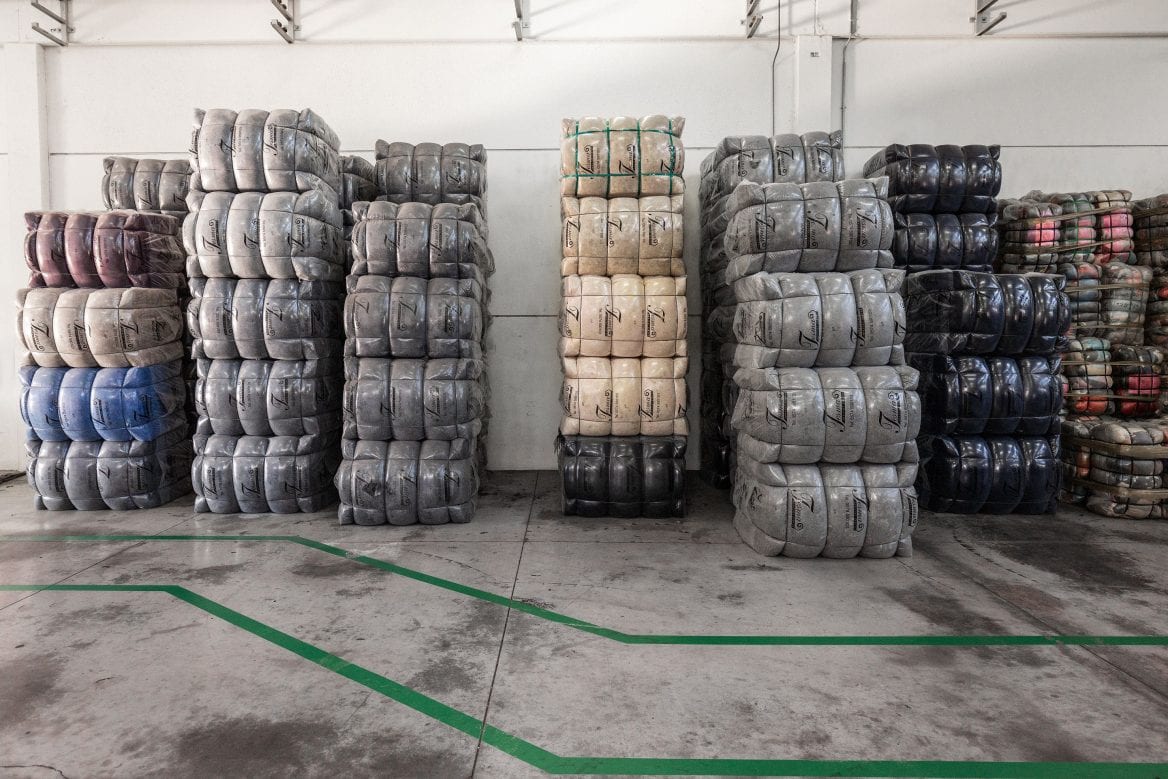
For customers looking for clothing and accessories
If you are looking for fine cashmere clothing or accessories, TESMA CASHMERE offers a sustainable collection.
Our finished garments and accessories are produced mainly with yarn counts of 1/12000, 1/14000, 2/14000 and 2/26000. Furthermore, each individual product has the possibility of being completely customised to your requirements.
All articles can be produced in different finenesses (5, 7 and 12) and as yarn-dyed, garment-dyed, also offering the possibility of further processing.
By purchasing a product by TESMA CASHMERE you will not regret it: you will have quality, durability and you will also contribute to the protection of the environment!
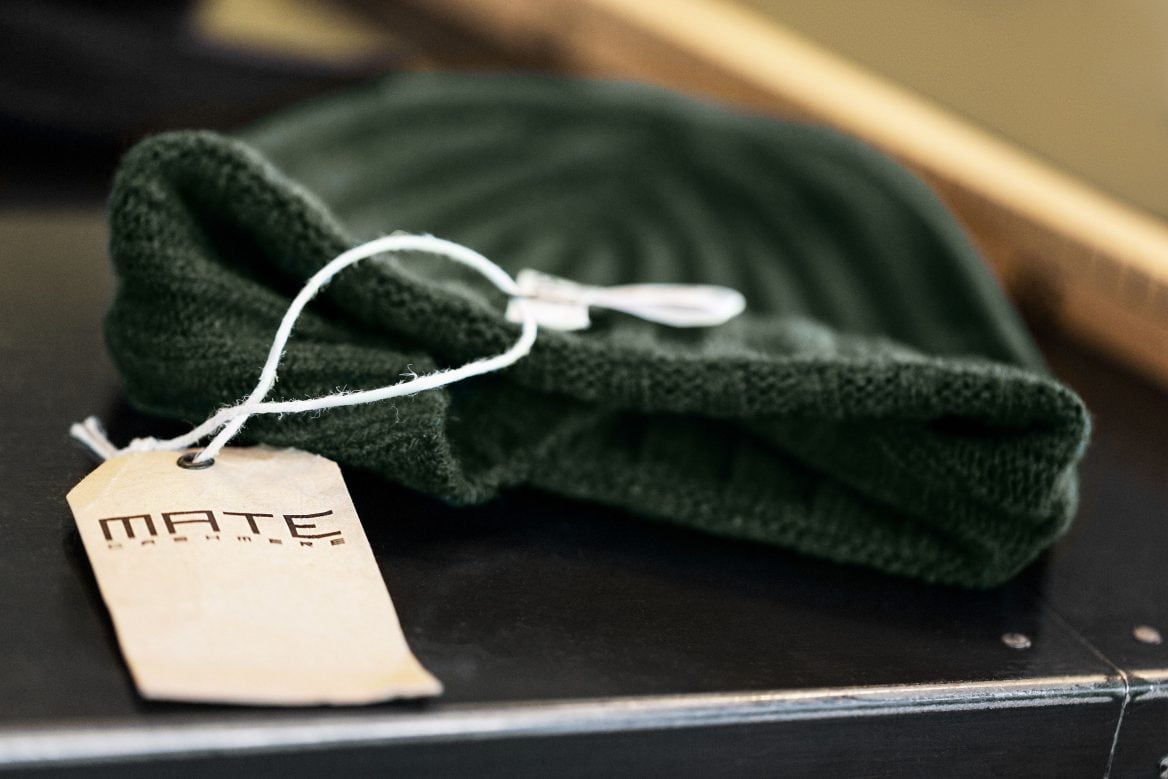
FAQs
Questions and answers about cashmere
Regenerated cashmere means the recycling of the fibre. It does not come directly from the pastures of cashmere goats, but is obtained from finished cashmere knits, which are treated with special cards so that they become textile raw material again, ready to be fed into the production process for the second time.
On average , the price of a kg of cashmere yarn is between 160 and 170 euros, not considering labour. This is because each adult goat only generates between 100 and 200 grams of hair harvested during the moulting season and therefore 2 to 6 goats are needed to produce a cashmere jumper so 2 to 6 goats are necessary to produce a cashmere jumper , which inevitably has an impact on the final price of the finished garment.
Cashmere is a natural fibre of goat origin, but it is not the only one. There is in fact another very valuable natural fibre such as cashmere that comes from the fleece of the goat, called mohair. Mohair is obtained from the Angora goat, while cashmere comes from the cashmere goat.
The most precious cashmere comes from cashmere goats that live at high altitudes: the higher the altitude, the colder it will be and therefore the better the hair of the animal's undercoat (duvet), which the animal will generate to protect itself from the low temperatures.
Cashmere jumpers sold from emerging countries may be priced around 70 euros, but they certainly do not have the quality and value that belongs to made-in-Italy garments. On the other hand, the prices of designer cashmere products (carrying the name of a brand) can be as high as 500 euros. Finally, if you turn to artisan production , the price can reach a maximum of 160 euros and certainly, among the three options, it is the most convenient!
For finished products
To understand if a garment is made of real cashmere first of all, the most natural first thing to do is to read the label sewn into it. It shows the list of textile raw materials of which the product is made. The presence of the label is obligatory.
If necessary, you can also do another test. Try tightening your garment and then immediately releasing it: if after a few minutes it comes back as before and has not creased, then it is real cashmere. In fact, cashmere is a crease-free fibre.so is crease-free!
For the fibre
On the other hand, if you have to analyse the fibre, it is real cashmere if it visually appears much shinier and brighter than other wools. Then you must touch it: it will feel soft and fluffy.
If necessary, you could observe the behaviour of the fibre in contact with the flame. When burning some fibres, there is an odour that will remind you of 'burnt hair', then it will certainly be wool. Both wool and hair are in fact composed of keratin and therefore have the same behaviour in the flame; white fume will be produced; finally the residue will be black coarse ash.
For a lifetime! Initially, the expense might seem significant to buy a cashmere jumper for a customer, but we can assure you that it will be well worth it. By purchasing our products you will be responding to the philosophy of “buy less, buy better” while helping the environment considerably.
The more threads used during the weaving of a cashmere fabric, the greater the weight and thickness of the fabric and the greater the softness of the fibre.A cashmere pullover (or any other cashmere garment) woven with 6 threads is definitely a garment for the winter season.
About 2 to 6 cashmere goats are needed to produce a cashmere jumper because each adult goat only produces between 100 and 200 grams of hair during the winter. On average, therefore, between 400 and 500 grams of fibre are needed to produce a jumper.
